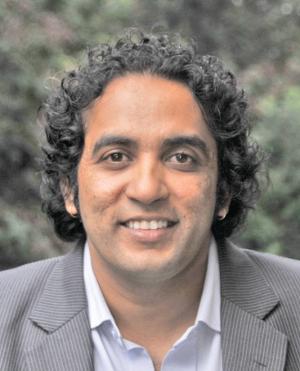
Could you elaborate on Aseema’s open source offerings?
Aseema provides device engineering and ERP/CRM solutions for mobiles. A core area we are focusing on is segment-centric tablets that can be used in the retail, educational, medical and other specialised areas. For these tablets, we do the device engineering and the required applications according to the segment we are focusing on.
Android is often associated with mobile phones. Is there an increase in the use of Android on other platforms?
Android is seeping into many devices in sectors other than telecom. The doors in the electronics device segment are opening up for Android. It is used not only in phones and tablets, but even the electronics sector. However, Android is comparatively a new phenomenon and the industry started waking up to it only about two years back. Hence, the sudden increase in demand. Not many people have worked on this platform, and as a result, you see a rapid need for Android expertise.
Now, many organisations in India are building an extensive Android excellence centre. There is an acute scarcity of Android expertise globally in the non-telecom market and this is felt especially in India, because the global market looks to India for such solutions.
What are the sectors driving this demand?
The requirement for people with Android expertise is highest in the telecom sector, closely followed by the electronics industry. Backseat entertainment, retail dashboard activities, smart grid to optimise utilities, home entertainment, set-top boxes, television, etc, are also moving onto Android. It may take a while, but Android will also soon be available on home appliances.
Do you feel using Android can add value to the process of project development? If so, please state a few advantages of using Android platforms or technology tools?
Customers prefer to be connected with their devices all the time and Android is an apt operating system to connect to other devices over the Internet. Moreover, Android is associated with cost-effectiveness, and its real value lies in an extremely user-friendly growth. It is also reassuring to technologists that Google is a hidden parent for Android and that its framework does not allow fragmentation.
Is cost a significant reason for companies to adopt Android on their devices?
Yes, Android devices earlier cost $200 but are now available with the same features for $80. Using the Android OS reduces the cost of the device; Windows and Apple devices prove to be much more expensive. Moreover, proprietary operating systems are not flexible, as the source code is not available to developers.
Another reason why customers choose Android is because security is an important aspect of the device, and a lot of developers are building security around it in the form of apps. We have seen Android penetrate into defense organisations as well.
How many employees do you have at Aseema? Do you plan to hire Android experts in the near future?
Currently, we have about 25 employees, and around half of them have been trained to work on Android. We plan to hire many more in the next two years, to work on 20 devices concurrently. We will require about 10 to 20 people to work on designing each device, so the approximate number we are looking at hiring is 300.
What do you look for while choosing employees?
In our current team, we looked only for core programming skills in C language, as we knew people with Android skills were not available easily. We also look for analytical skills, so our tests are based on these two skills plus the candidate’s attitude in terms of eagerness to learn. We take the responsibility to hire, mentor and develop Android skills in the person.
How do you train your developers to work on Android?
Though we do not train employees, we allot even freshers to work on new devices and provide a mentor for them to learn from. An employee of good calibre takes approximately three months to learn the basics, and about six to ten months to be productive.
Do you involve developers from the community or take any help from them during project development?
Until now, we have been working on designing device solutions and so we did not get involved with the online community, because we were device-centric. We are also working on applications for our tablets and we plan to participate in the community by sharing some of our work and contributing code.
What is your message to the community and developer fraternity?
It is high time that non-telecom device engineers latch on to Android skills. In fact, this is the right time to be skilled in the Android domain, as there is a dearth of skills in this area and Android penetration is very rapid. It will be like Windows for PCs, which some people were slow to adopt, but eventually was embraced by all. Android will soon be an inevitable part of designing devices.











































































I donot know who put this DUD’s article in LFU, he does not know anything on android….. he he …
He is an absolute waste guy thrown out from mindtree wireless